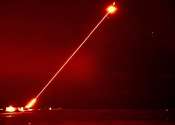Novel process for 3D-printing macro-sized fused silica parts with hi-res features
UpNano GmbH in Vienna, Austria, has co-developed a novel manufacturing process for 3D-printed fused quartz objects. This innovative technology enables the production of high-precision shaped parts in the mm and cm range.
Jul 23, 2024
0
14









